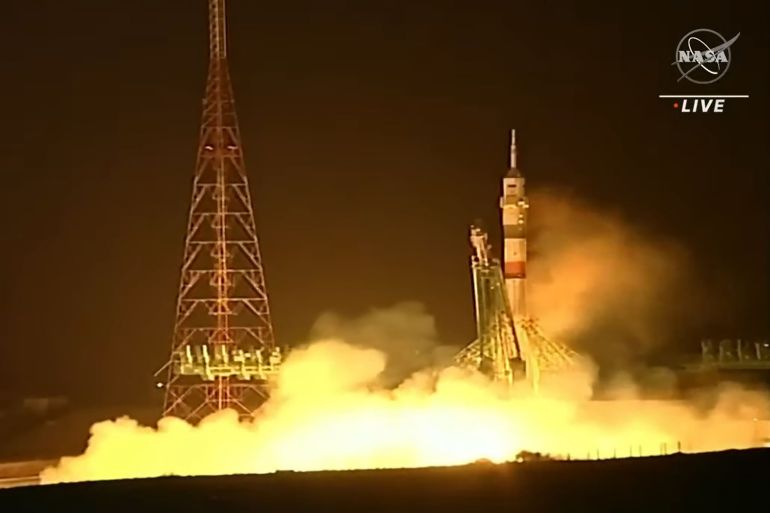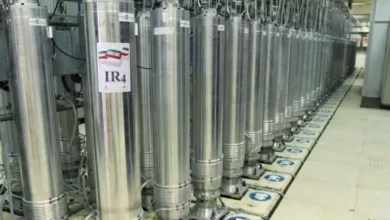Russia sends Soyuz rescue ship to International Space Station

Soyuz MS-23 will transport Russian cosmonauts Dmitry Petelin, Sergei Prokopyev and NASA’s Frank Rubio back to Earth later this year.

Russia has launched an uncrewed Soyuz spacecraft on a rescue mission to return two cosmonauts and a NASA astronaut whose trip back to Earth has been hampered after their original space vehicle was damaged by a mini meteorite while parked at the International Space Station (ISS).
The Soyuz MS-23 vessel blasted off successfully from the Russian-operated Baikonur Cosmodrome in Kazakhstan on Friday, live video broadcast by ISS partner NASA showed.
Though the MS-23 is scheduled to dock with the ISS early on Sunday morning Moscow time, it is not expected to bring home Russian cosmonauts Dmitry Petelin and Sergei Prokopyev, and US astronaut Frank Rubio until later this year.
The three arrived at the ISS in September 2022 onboard the MS-22 spacecraft and were originally to stay about six months until the end of March. But the MS-22 began to leak coolant in December after an apparent micro-meteorite punctured an external radiator.
The same thing appeared to happen again earlier this month, this time on a docked Russian cargo ship. Camera views showed a small hole in each spacecraft.
MS-23, which took off on Friday, was initially scheduled to launch in mid-March with two cosmonauts and an astronaut on board who would take over from Rubio, Petelin and Prokopyev at the space station. But without the replacement crew on board MS-23, the two Russians and the US crew member will now continue working at the ISS until September.
Officials had determined that it was too risky to bring the three back in their damaged Soyuz MS-22 next month as originally planned. With no coolant, the cabin temperature would spike during the trip back to Earth, potentially damaging computers and other equipment, and exposing the suited-up crew to excessive heat.
NASA said in a statement that the damaged Soyuz MS-22 is scheduled to undock from the ISS in late March and return to Earth “for an uncrewed parachute-assisted landing in Kazakhstan, and post-flight analysis by Roscosmos” – Russia’s space agency.
After delivering people to the space station, capsules stay attached to the orbiting research lab throughout the duration of missions, in case of any emergencies and to eventually ferry their crews home to Earth.
In addition to the three crew awaiting the arrival of MS-23, there are also four others currently on the ISS after arriving on a SpaceX Dragon capsule last October as part of the Crew-5 mission.
They are scheduled to be joined next week by members of the Crew-6 mission – two US nationals, an Emirati and a Russian – who will also arrive on board a SpaceX capsule expected to launch on Monday from Florida. After a few days of overlap, Crew-5 will then return to Earth.
Space has remained a rare venue of cooperation between Moscow and Washington since the start of the Russian war in Ukraine and ensuing Western sanctions on Russia.







